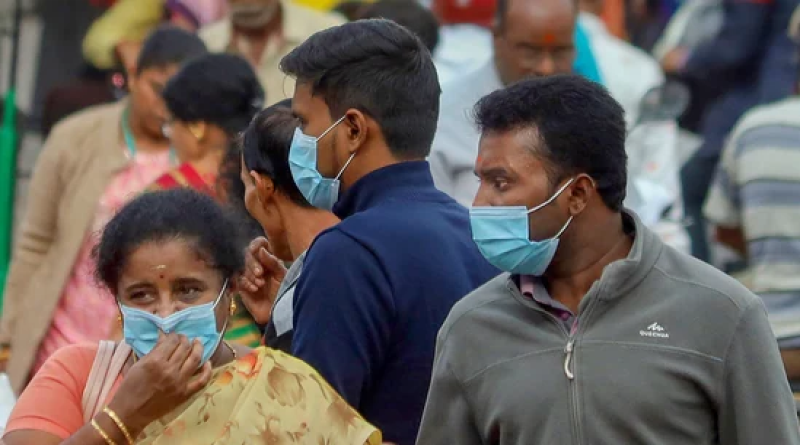JN.1 subvariant unveiled: India’s fight against new wave of Covid challenges

New Delhi: In the recent surge of COVID-19 cases across India, a new player has entered the scene – the JN.1 subvariant. So far, 22 cases of this subvariant have been reported in the country, prompting health officials to impose precautionary measures. However, a ray of hope remains: all reported cases have shown only mild symptoms, with no evidence of clustering so far.
In the last 24 hours, India recorded 752 new Covid cases, taking the active count to 3,420. With the recent death in Kerala, the total death toll has reached 5,33,332. The total number of Covid cases in the country has reached 4.5 crore.
The affected states which are seeing a significant increase in Covid cases include Kerala, Karnataka, Tamil Nadu, Maharashtra, Goa, Puducherry, Gujarat, Telangana, Punjab and Delhi. To deal with the sudden surge, the Center has issued instructions for comprehensive genome sequencing of all positive Covid test samples from these areas.
In response to the growing situation, many states are independently formulating surveillance guidelines to prevent the possible spread of the virus. Kerala Health Minister Veena George assured the public that although there has been a slight increase in cases, the situation is under control. Karnataka’s Health Minister, Dinesh Gundu Rao, expressed similar sentiments, and urged citizens to adopt precautionary measures without imposing immediate restrictions.
Rajasthan has taken a proactive approach by setting up a state-level team dedicated to preventing and controlling COVID-19 infections. In Bihar, Chief Minister Nitish Kumar chaired a high-level meeting, stressing the need to increase testing rates and ensure availability of essential resources in hospitals. Kumar also stressed the importance of public awareness campaigns to promote Covid-appropriate behaviour.
Data related to the JN.1 subvariant shows that about 93% of those infected show mild symptoms and are isolated at home. Only 0.1% of hospitalized patients are on ventilator support, 1.2% are in the intensive care unit (ICU), and 0.6% are on oxygen support. Dr. Soumya Swaminathan, former chief scientist of the World Health Organization (WHO), has reassured the public that there is no reason to panic as JN.1 has been classified as a “variant of interest” and not ” As a “type of concern”.
As India grapples with the evolving dynamics of the COVID-19 pandemic, the emphasis on genomic sequencing and localized surveillance reflects a proactive strategy to contain the potential impact of JN.1 subvariants. Vigilance, coupled with individual and collective responsibility, remains the key to dealing with these challenging times.






Pingback: แม่บ้านสมุทรปราการ
Pingback: กระดาษฉาก
Pingback: เว็บหวยออนไลน์เว็บตรง LSM99
Pingback: candy burst
Pingback: https://hitoption.net
Pingback: Social Media Marketing
Pingback: ขายเศษผ้า
Pingback: LSM99DAY เว็บเดิมพันครบวงจร
Pingback: สล็oต PG
Pingback: 10 carat diamond price
Pingback: Onion Links
Pingback: สล็อตเว็บตรง ค่ายพีจีโบนัสแตกง่าย
Pingback: การ์ดแต่งงาน
Pingback: Games Global ค่ายสล็อตเปิดใหม่
Pingback: pin up
Pingback: check here
Pingback: แว่นตากันแดดผู้หญิง
Pingback: สายคาดกล่องอาหาร
Pingback: buy-blue-meanie-online
Pingback: pg slot auto
Pingback: โปรโมชั่น huaybee